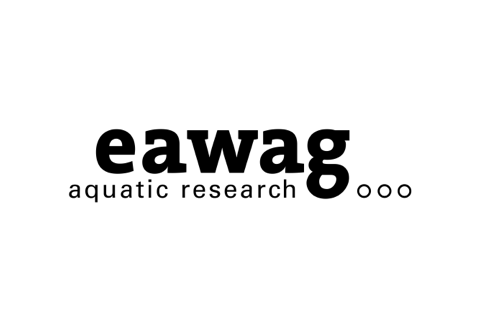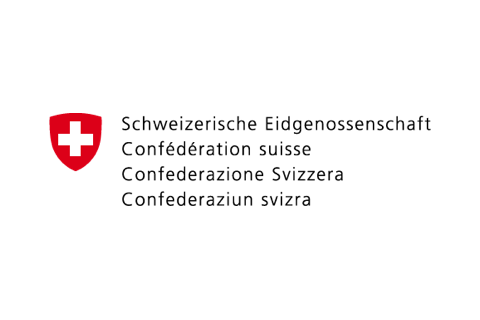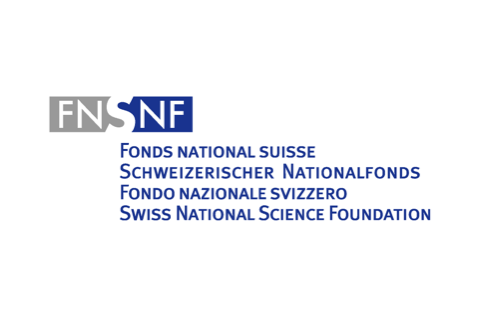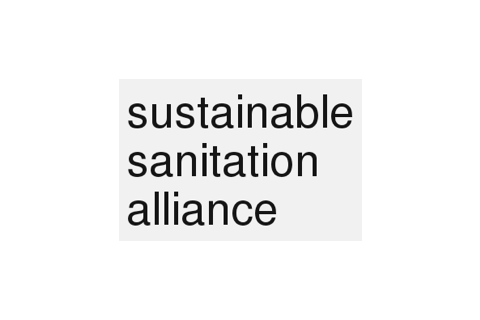back case list
Arba Minch is located in the southern part of Ethiopia and, in 2017, had a population of 114’570 inhabitants. With an annual growth rate of 4.5%, it is one of the fastest growing cities of Ethiopia. The area of the city is large (56 km2), with a low average density (approx. 2000 inhabitants per km2). But most of the population is concentrated in the residential areas around the university. The Arba Minch town municipality (AMTM) is part of the Great Rift Valley and is bordered by the Abaya and Chamo lakes in the East as well as by a mountain escarpment in the West. The topography is very diverse and combines both steep and undulating terrain of the upper town area and flat areas in the valley. It is divided into four sub-cities, which have been restructured into eleven administrative “kebeles” (smallest administrative zone). In the 2012, around the town of Arba Minch, in the Arba Minch District, there were 164,529 people, of whom 82,265 were male and 82,264 were female. In this district, 53.9% practiced Protestantism, 29.3% practiced Ethiopian Orthodox Christianity, 12.6% practiced Traditional beliefs, and all other religious practices made up 4.1%.
The situation can be briefly summarized as followed, for more detailed information, please refer to the appropriateness criteria in the case settings:
- Water access mostly in the yard
- Only 20% of population have access to electricity supply
- Important difference in water consumption ranges from 10 to 250 L/cap/day
- Warm climate with two rainy seasons
- High flooding risk
- Sandy clay soil in hilly area
- Limited vehicular access
- High faecal contamination for drinking water
- Groundwater depth varies from 20m to 200m
- Any kinds of cleansing methods are used (mostly washers)
- Continuous operation and maintenance by the population for a sanitation system is limited
- Lack of professional skills in the sanitation sector for design, operation and maintenance
The case study located in Arba Minch, Ethiopia, was conducted by a large team of researchers from six different research institutes. The report of the case study was published in the Volume 271 of the Journal of Environmental Management in 2020.
Load this Case
Changunarayan is a periurban municipality located in the surroundings of Katmandhu, Nepal. It is populated by 64’260 people residing in 16’984 households with a growth rate of 4.4%/yr. The average population density is 1020 cap/km2 but one has to note that there exists a high-density variation within the municipality which spreads over more than 60km2. Basic sanitation elements such as toilet infrastructure connected to cesspits are present, but full sanitation systems are mostly absent.
The situation can be briefly summarized as followed, for more detailed information, please refer to the appropriateness criteria in the case settings:
- Water access mostly within the households
- Intermittent electricity supply
- Important difference in water consumption ranges from 20 to 150 L/cap/day
- Space availability is not limited onsite but offsite
- Temperate climate with monsoon
- Very limited flooding risk
- Lmited vehicular access
- Clay soil in hilly area
- Operation and maintenance for a sanitation system cannot be provided continuously
- Availability of design, O&M and construction skills
The case study was conducted in 2022 by a team of researchers from the Swiss Federal Institute of Aquatic Science and Technology (Eawag), Dübendorf, Switzerland in cooperation with 500B Solutions, Lalitpur, Nepal, a local sanitation consulting company.
Load this Case
Cox's Bazar is a refugee settlement in Bangladesh counting approximately 14’509 inhabitants in 2020. The camp can be characterized as very dense, with many areas being regularly flooded during the monsoon season and travel therefore mostly possible by foot. The population residing in the camp is contains predominantly people with Muslim affiliation. It was assumed that the emergency is in its initial phases to simulate the acute phase of an emergency. During the acute phase of an emergency the number of people in the camp is expected to rise quickly and unexpectedly. The new arrivals require urgently access to sanitation solutions and therefore toilets need to be built rapidly. Many NGOs (including substantial funds) as well as the military of Bangladesh are present, however coordination between the different entities has not yet been properly organized. Supply chains have not yet been properly set up. Overall, it is a chaotic situation with high levels of need and vulnerability.
The situation can be briefly summarized as followed, for more detailed information, please refer to the appropriateness criteria in the case settings:
- Public water supply reaching 50% of the area
- 3 to 10 litres per person and day of WASH water
- Anal cleansing water
- Very limited space availability onsite and offsite
- No electricity
- High flooding risk during monsoons
- Fuel, pipes, pumps and spare parts not available
- Steep terrain with sandy clay
- Groundwater depth varies from 2m to 12m
- High risk of faecal contamination of drinking water
- Operation and maintenance is irregularly provided and rarely on a regular basis
- Tropical climate with monsoons
- No vehicular access
- Limited human resource but availability of professionals, engineers and architects in NGOs
- System has to be scalable as number of people in the camp is expected to rise quickly and unexpectedly
This case study was based on a project by Kukka Ilmanen and Akanksha Jain of their master’s degree in environmental engineering at the Institute of Civil, Environmental and Geomatic Engineering of the Swiss Federal Institute of Technology (ETH), Zurich, Switzerland.
Load this Case
Cox's Bazar is a refugee settlement in Bangladesh counting approximately 14’509 inhabitants in 2020. The camp can be characterized as very dense, with many areas being regularly flooded during the monsoon season and travel therefore mostly possible by foot. The population residing in the camp is contains predominantly people with Muslim affiliation. The camp has already existed for several decades and it cannot be assumed that the need for the camp will end soon. There is no longer an influx of people coming in and the camp is no longer in the acute phase of the emergency and in general, has characteristics belonging to the stabilization and recovery phases of an emergency. However, high levels of need and vulnerability remain critical. The WASH sector has identified huge gaps in faecal sludge management and disposal solutions. Due to a combination of factors, desludging of latrines built during the acute phase of the response has become an urgent priority and major gap. The crisis has created an imminent public health risk posed by the large number of poor-quality pit latrines, in many cases in the direct vicinity of shallow wells equipped with hand pumps. At present, 40 % of the pit latrines in the mega camp are estimated to be full. The government authorities, with support from the WASH sector, are putting greater emphasis on building toilets that are safe, emptiable and more sustainable.
The situation can be briefly summarized as followed, for more detailed information, please refer to the appropriateness criteria in the case settings:
- Public water supply
- Limited water consumption (3 to 20 litres per person and day)
- Anal cleansing water
- Very limited space availability onsite and offsite
- Intermittent electricity supply
- High flooding risk during monsoons
- Fuel, pipes and pumps available
- Spare parts difficultly available
- Steep terrain with sandy clay
- Groundwater depth varies from 2m to 12m
- High risk of faecal contamination of drinking water
- Operation and maintenance can be regularly provided by the camp inhabitants
- Tropical climate with monsoons
- Limited vehicular access
- Limited human resource but availability of professionals, engineers and architects in NGOs
- System has to be easily scaled up for a larger number of users due to relocation of inhabitants because of monsoon flooding and landslides
This case study was based on a project by Kukka Ilmanen and Akanksha Jain of their master’s degree in environmental engineering at the Institute of Civil, Environmental and Geomatic Engineering of the Swiss Federal Institute of Technology (ETH), Zurich, Switzerland.
Load this Case
This is an didactic example developped for the practicioners guide. It is about the fictional town of Thirty Springs. The example is based on a case study in Ethiopia that took place between 2015 and 2019 in collaboration with the Arba Minch University and Town Municipality.
Load this Case
Katarniya is a very typical example of an emerging small town in the mid-western region of Nepal with a population of approximately 2’000 inhabitants. The city faces rapid and unplanned growth, so the population today is probably already far above 2000 inhabitants. Furthermore, it is characterized by a weak institutional setting and a lack of human and financial resources. Therefore, several sanitation related problems could occur as the population is growing rapidly. Basic sanitation elements such as toilet infrastructure are present, but full sanitation systems are mostly absent.
The situation can be briefly summarized as followed, for more detailed information, please refer to the appropriateness criteria in the case settings:
- Water access mostly in the yard
- Intermittent electricity supply
- Important difference in water consumption ranges from 10 to 250 L/cap/day
- Temperate climate with monsoon and cold winter
- No flooding risk
- Limited vehicular access
- Sandy soil in hilly area
- Groundwater depth varies from 6m to 25m
- Operation and maintenance for a sanitation system cannot be provided continuously
- Lack of professional skills in the sanitation sector
The case study was conducted by a team of researchers from the Swiss Federal Institute of Aquatic Science and Technology (Eawag), Dübendorf, Switzerland in cooperation with the Institute of Civil, Environmental and Geomatic Engineering of the Swiss Federal Institute of Technology (ETH), Zurich, Switzerland.The leading researcher of the Case Study was Dorothee Spuhler. The report of the case study was published in the Volume 145 of the journal "Water Research" in 2018.
Load this Case
The community of Quebrada Verde (QV) is located in the lower part of the Lurin River Basin in the Pachacámac District in Lima, Peru. QV is a semi-informal settlement with 800 inhabitants. It borders on the north and the west with highlands, and on the east and the south with the agricultural area and the Lurin River, one of the three main rivers in Lima. The settlement is equipped with a mix of urban, rural, and peri-urban infrastructures. The primary source of income for many settlers in the peri-urban areas of Lima is still agriculture which represents a significant percentage of economic activities. It receives inadequate drinking water and lacks a public sewer system. This leads to health risks. Parasites and diarrheal diseases are reported. An effort to provide safe sanitation service to such settlement through a container-based sanitation system has been shown by a social venture in Lima, x-runner. This system relies on a urine-diverting dry toilet (UDDT) with centralized emptying and treatment. However, these innovations are restricted by the absence of suitable regulations for their services that require different organization than centralized sewer systems. The provision of safe sanitation services for Lima’s informal settlements is a dilemma for both communities and regulators. Both parties are seeking a long-term solution, yet the implementation might not come soon. Alternative services, e.g., container-based sanitation or the condominial sewer, can be something to look forward to. Another technology that has long been used for treating wastewater is an activated sludge process. Activated sludge systems, such as conventional activated sludge and anaerobic-aerobic systems in sequencing batch reactors (SBR), have been implemented in Lima. The conventional activated sludge system is particularly applied at the wastewater treatment plant (PTAR) at PTAR Cieneguilla in the district of Cieneguilla in the Lurin Valley.
The situation can be briefly summarized as followed, for more detailed information, please refer to the appropriateness criteria in the case settings:
- Water access inside the house or in the yard
- Intermittent electricity
- Operation and maintenance can be provided mostly on a regular basis by the local population
- Spare parts available at any time
- Temperate to warm temperature
- Low risk of flooding
- Limited but existing vehicular access
- Rocky soil with high stone and gravel content
- Groundwater depth varies from 3m to 100m
- Available land for onsite facilities but limited offsite
- Skills for construction, design as well as in operation and maintenance available
The case study was conducted by the researchers Ainul Firdatun Nisaa representing the Institute for Sanitary Engineering, Water Quality and Solid Waste Management, University of Stuttgart, Stuttgart, Germany as well as the Department of Environmental Engineering, Institut Teknologi Sepuluh Nopember, Surabaya, Indonesia; by Manuel Krauss representing the Institute for Sanitary Engineering, Water Quality and Solid Waste Management, University of Stuttgart, Stuttgart, Germany as well as the Research Institute for Water and Waste Management at the RWTH Aachen University (FiW), Aachen, Germany and by Dorothee Spuhler from the Swiss Federal Institute for Aquatic Science and Technology (EAWAG), Dübendorf, Switzerland. The report of the case study was published in the Number 9 of the Volume 13 of the journal "Water" in 2021.
Load this Case








